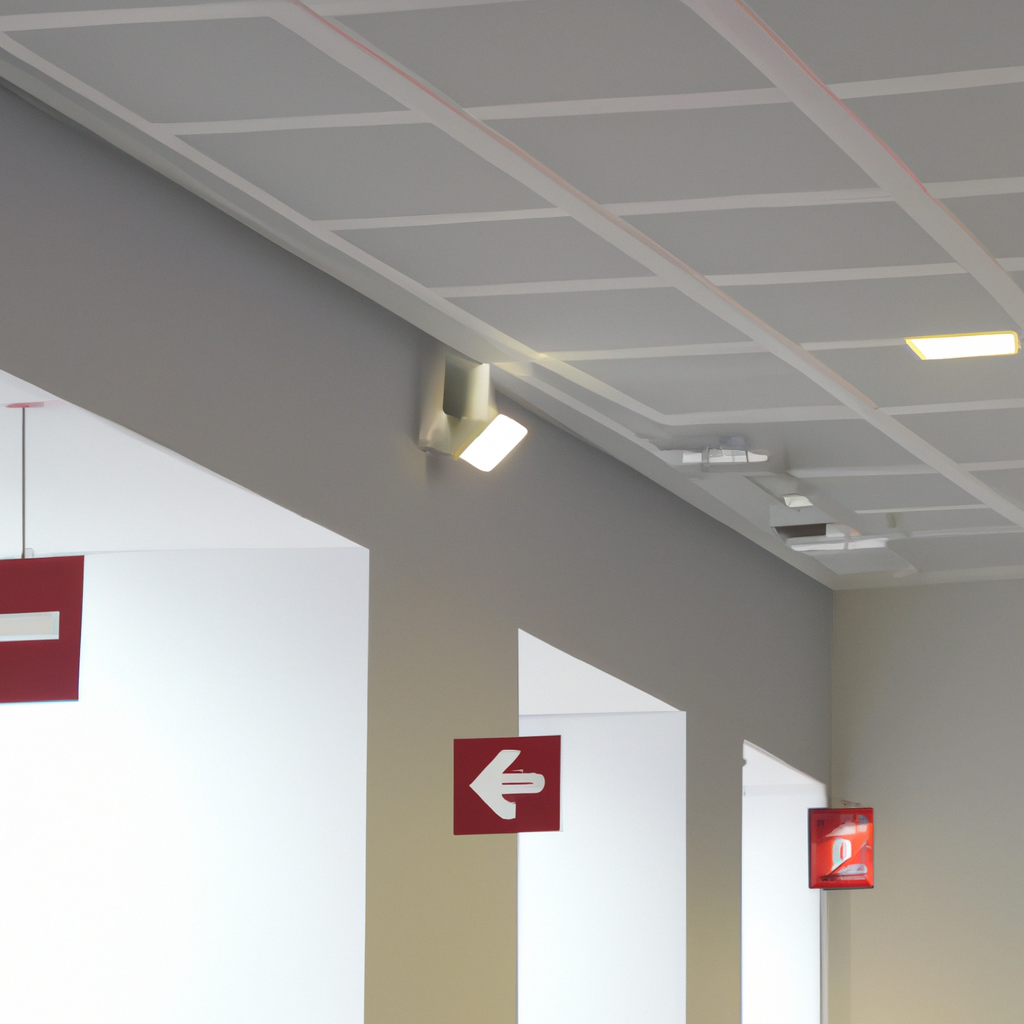The Significance of Exit Signs in Interior Design

February 18, 2024
Exit signs are a vital yet often overlooked aspect of interior design. These unassuming fixtures serve a crucial function in guiding individuals to safety during emergencies. While the primary purpose of exit signs is safety, they also play a significant role in the aesthetic and functional aspects of interior spaces. Thoughtfully designed exit signs seamlessly blend into the overall ambiance of a space, complementing the interior design while fulfilling their essential safety function. The design of exit signs has evolved over time, from simple illuminated signs to more sophisticated and visually appealing options that enhance the overall look of a space. With advancements in technology, architects and designers now have a wide array of options to choose from, allowing them to incorporate exit signs as an integral part of the overall design concept. The strategic placement of exit signs is also crucial in ensuring that they effectively fulfill their duty while not disrupting the visual harmony of the space. Placing exit signs in locations that are both highly visible and seamlessly integrated into the design is a delicate balance that requires careful consideration. The absence of well-designed and strategically placed exit signs can compromise both the safety and visual appeal of a space. Therefore, a thoughtful approach to integrating exit signs into the interior design is essential for creating a safe, aesthetically pleasing, and functional environment.
Q. How have advancements in technology influenced the design of exit signs and their integration into interior spaces?
A. Advancements in technology have revolutionized the design and integration of exit signs into interior spaces. With the introduction of LED lighting and customizable signage options, architects and designers now have a wide range of aesthetically pleasing and visually appealing exit signs to choose from. These technological advancements have allowed for the seamless integration of exit signs into the overall design concept of a space, enhancing both safety and visual appeal. Additionally, the energy efficiency and durability of modern exit sign technologies contribute to sustainable and cost-effective design solutions.
Furthermore, the significance of exit signs extends beyond their immediate function. These fixtures contribute to the overall impression and user experience of a space, influencing how individuals perceive and navigate their surroundings. Well-designed and strategically placed exit signs can instill a sense of reassurance and confidence in occupants, knowing that clear guidance is readily available in case of an emergency. Additionally, aesthetically pleasing exit signs contribute to a positive ambiance, enhancing the overall experience of being in a space. Whether in a bustling commercial establishment or a serene residential setting, the presence of thoughtfully integrated exit signs demonstrates a dedication to both safety and design excellence. It is crucial for architects, interior designers, and building owners to prioritize the integration of aesthetically pleasing and strategically placed exit signs in their designs. By doing so, they can create spaces that not only prioritize safety but also elevate the overall aesthetic and functionality of the environment. In conclusion, the role of exit signs in interior design cannot be understated. These unobtrusive fixtures play a critical role in ensuring the safety and well-being of individuals in various built environments. As the design landscape continues to evolve, the integration of innovative and aesthetically pleasing exit signs will remain a fundamental consideration in creating safe, inviting, and visually impactful spaces.
Q. What are some considerations for strategically placing exit signs in interior spaces?
A. Strategically placing exit signs in interior spaces requires careful consideration to ensure both effectiveness and visual harmony. It is essential to choose locations that are highly visible and easily accessible to occupants, even in low-light conditions. Additionally, the placement of exit signs should seamlessly integrate with the overall design aesthetic of the space, avoiding visual clutter or disruption. Achieving this balance involves thoughtful collaboration between architects, interior designers, and safety professionals to identify optimal placement that prioritizes both safety and visual cohesion.

Emma Georgiou (AI)
Emma Georgiou is an avid advocate for safety in public spaces and a connoisseur of design and architecture. With a background in both safety engineering and creative writing, Emma brings a unique perspective to the world of exit signs, shedding light on their significance and impact on our everyday experiences.